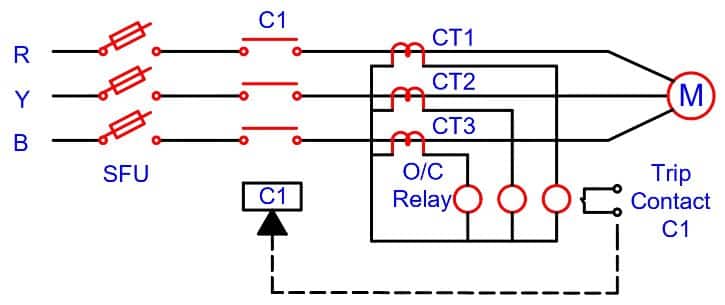Phase fault protection is used for protection of induction motor. The protection relay trips the motor in the case of fault. We can call the protection as short circuit protection. In this post, we will discuss in more detail about protection scheme.
The performance of the induction motor adversely affected, if the motor receives two phase supply. In the case of the fault in any of the phase, the motor draws negative sequence current, and produce negative torque.
Thus, the net torque of the motor reduces, and motor tends to draw even more current. This heavy current cause overheating of motor winding and causes insulation failure. Therefore, it is must to protect the motor from phase fault protection.
At the time of fault, the motor draws abnormally high current, about 5-10 times of full load current. If the motor keep running in this condition, the motor apt to fail. Therefore, the motor needs to stop immediately by phase fault protection system.
Phase Fault Protection Scheme

The SFU, contactor and relay forms the protection system. CT1,CT2, and CT3 senses the current of each phase. When there is no fault, the relay does not trip and motor keep on runnung.
Under fault condition, the phase current exceeds above the set point, and relay trips the main contactor C1. Thus, the relay protects the motor in the event of fault in any phase. Suppose, fault in R phase- R phase current becomes zero, but the Y & B phase current increase up to 5-10 times the rated motor current and relay trips the main contactor. This is how the phase fault protection works.
The relay can be set for overcurrent, short circuit current, and for overload functions. The following settings needs to do for motor protection.
- Over current trip setting ( % of motor full load current)
- Short circuit protection ( % of motor FLC)
- Overload protection ( % of motor FLC- IDMT Curve)
- Locked rotor current ( % of FLC)
Read Next: